(This post may be a bit long for some email software, so if you don’t see “Next stop: Ancient Mycenae” at the bottom of your email, you’ll need to click on the title to go to the website and see the full post).
We hired a small car for a day to tour around some of the local archaeological sites. This area is rich in historical sites as it’s close to ancient Sparta, Mycaenae and Corinth …. All powerhouse city states back in ancient Greek times rivalling (and sometimes exceeding) Athens for dominance. We started early because we knew it would be a long day.
Ancient Argos
First up was Argos, an ancient Greek city not far up the road from Nafplio. Argos is a bustling little town these days, but back in the day it was an important centre with a large theatre, huge agora (marketplace) complex and lots of civic buildings. Unlike most towns in the Argolida valley, Argos did not have abundant surface water, however, they dug wells to access the aquifers and ended up having a plentiful water supply.
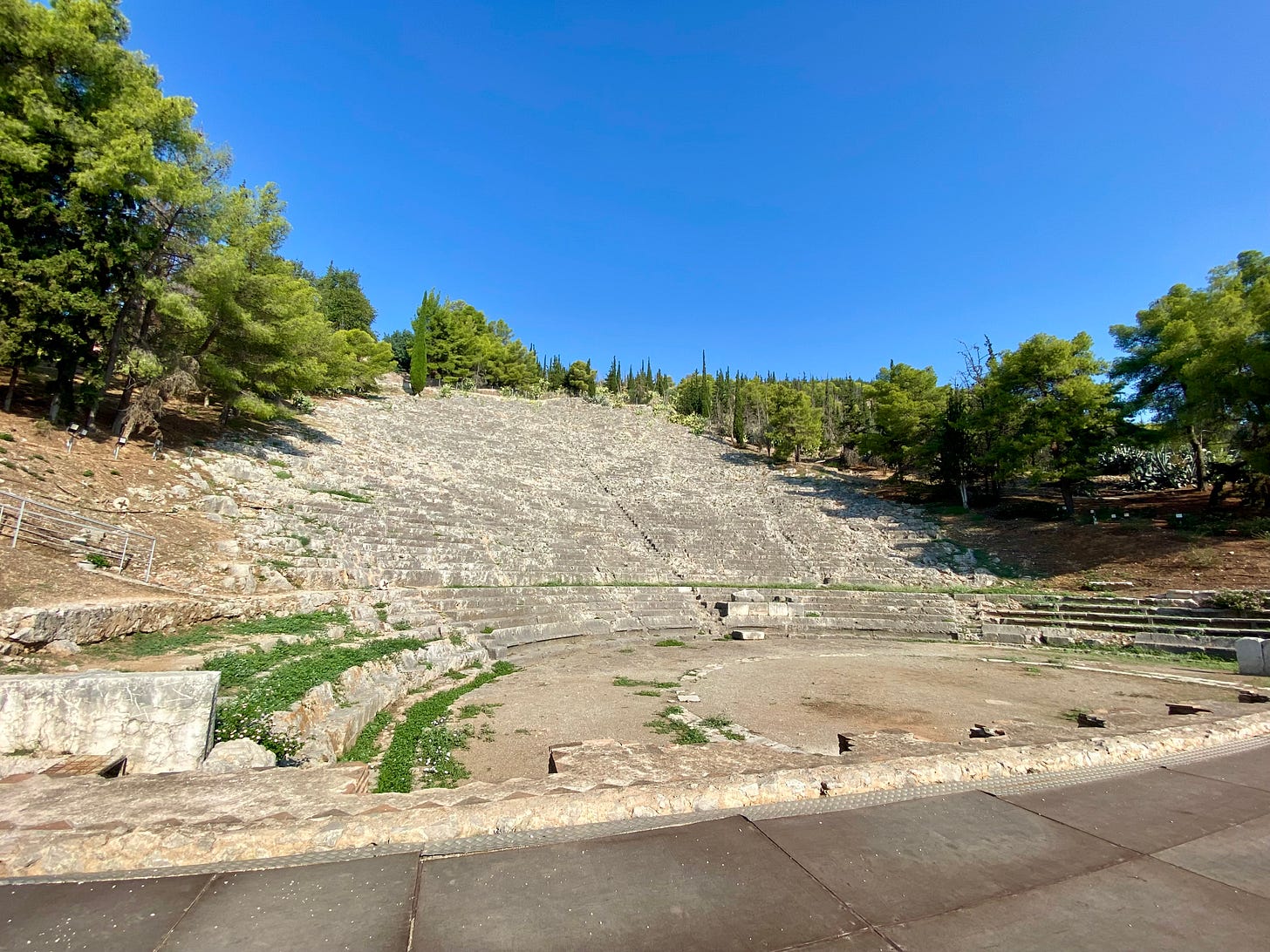

Midea Acropolis
The Acropolis of Midea was the third most important Mycenaean acropolis in the Argolidos area. Its Cyclopean fortification wall (built with massive blocks of stone, said to be placed by Cyclops), its place in mythology and its connection with the rich cemetery of Dendra (our next visit) all demonstrate its significance. (In the cemetery at Dendra, a royal Tholos tomb was found furnished with rich panoply (body armour) of a Mycenaean warrior.)
It’s a hot day, and a bit of a climb to get to the top. There’s not a lot to see as far as the buildings are concerned - mainly foundations and some walls. This site was abandoned a long time ago as a village. The climb is worth it for the view though, and we have excellent 360 degree views of the surrounding fertile flood plains.
The finds have shown that Midea was settled as early as the Late and Final Neolithic Period (5th and 4th millennia B.C.) and that there was a substantial settlement there during the Early and Middle Bronze Ages (3200-1600 B.C.) that developed into a large and important centre in the Mycenaean Period (1600-1100 B.C.). Midea reached its height during the 13th century B.C, and the fortification wall with the gates and the best preserved of the buildings (some of which were two story) on the Lower Acropolis date from this time. At the end of the 13th century B.C., Midea, like Mycenae and Tiryns, was struck by a severe earthquake that caused extensive destruction to the fortifications and the buildings of the acropolis. The next phase in the history of Midea comes down to the Archaic Period with the foundation of a sanctuary. In Late Roman and Byzantine times the site was inhabited again.

Excavations have shown that this area was destroyed by fire c. 1200 B.C. Thick layers of soil mixed with ashes were excavated here and the finds, i.e. storage vessels and tools of stone, indicate that the rooms were used as storages and work-shops. The presence of mud-brick and lime plaster shows that an upper floor existed and when the buildings collapsed, the objects from above, for example terracotta figurines, spindle whorls and lead vessels, fell down in the cellars.

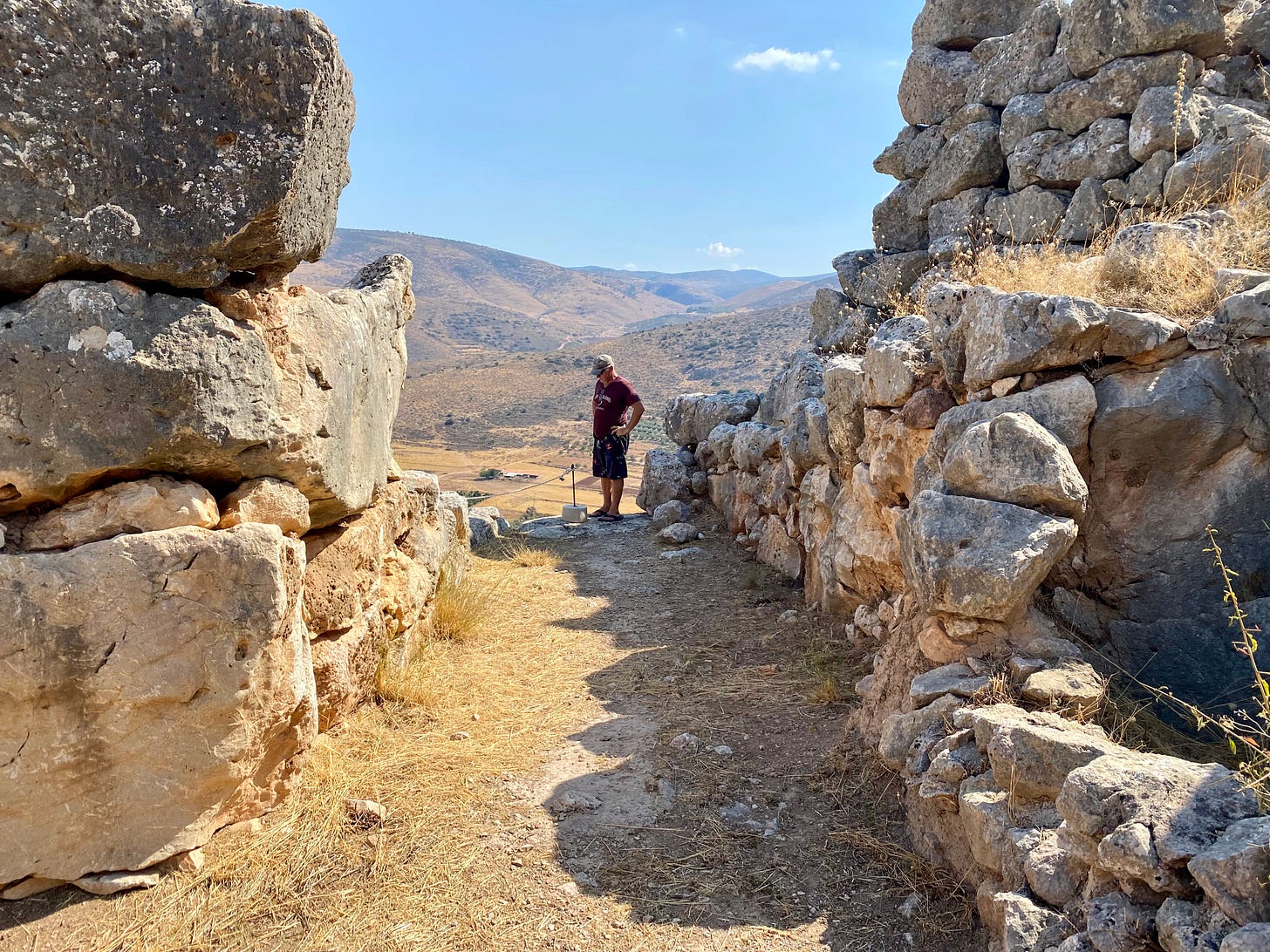
Midea Tombs
A short drive away, in amongst the houses of a small village, is the Midea tombs of Dendra.
The Tholos of Dendra is a royal tomb probably belonging to the ruler based in Midea. It consists of a passage (dromos), 17.90m long, an entrance (stomion) and a circular vaulted chamber (tholos) 7.30m wide. The dromos is lined with a stone wall. Its outer end was closed with a blocking wall.
The doorway is flanked by two tall jambs made of poros stone. The large lintel slab above the entrance is curved with its inner face following the curvature of the tholos. The original height of the tholos, which is built according to the corbelled system, can be estimated to be ca. 7m.
Several ornaments, pottery as well as human bones were found scattered in the dromos, stomion and Tholos.
There were four unplundered pits under the floor of the chamber. The largest one contained the burial of a man and a woman. The precious grave offerings consisted of bronze weapons, glass models of boar's tusks, an ostrich egg rhyton (drinking vessel), a steatite lamp, gold, silver and bronze vessels, sealstones of semi-precious stones, as well as ornaments of gold, silver, rock-crystal and semi-precious stones.
In another pit a female interment (burial) was found with precious ornaments such as a necklace of gold rosettes, a gold ring and other ornaments of faience (tin glazed pottery), glass and ivory. The tomb dates to 1450-1350 BC.
The tholos collapsed during the geometric period. In the 9th century BC, after the vault fell down, a burial accompanied by a geometric pyxis was placed inside the blocking wall of the entrance.
When we got back to the car we found a problem. As soon as we started the rental car the “check engine” light came up on the dash and it started running roughly in “limp home” mode. We phoned the rental car company and they apologised and came out to us to drop off a replacement vehicle (a Nissan minivan) and to sort out the ailing Fiat Panda. It turns out it was a simple electrical connection fault and was fixed in about 10-15 minutes.
Heraion of Argos
Our next stop was a fascinating site with no information whatsoever.
We found a Greek archeological website that tells us that this site was a temple complex built to serve Argos and that it was dedicated to the goddess Hera (Zeus’ long suffering wife/sister). Built in the 8th and 7th centuries BC, the temple complex consists of several terraces with substantial foundations for what were presumably large temples. Hera was said to be the protector of Argos, Sparta and Mycenae.
The heyday of the sanctuary was in the 5th century BC, but the place continued to function until Late Roman times.
Here’s what we found on the archaeological site:
The place was a sanctuary of Hera and was built and organized on two successive terraces on different levels. There was a monumental stairway that appears to be mostly gone now. At the first level there is a stoa - columned walkway - where Steve accidentally plays dominos with one. 🤭
Some of the huge retaining walls also acted as foundations for the temples on the next level - which appear to have been quite substantial.
Inside the temples were various statues, including a gold and ivory statue of Hera. Next to it was the gold and ivory statue of her daughter, Hebe.
The upper terrace, measuring 56x34 m, was partly cut into the rock and was supported by a massive Cyclopean retaining wall (said to have been built by giant cyclops).
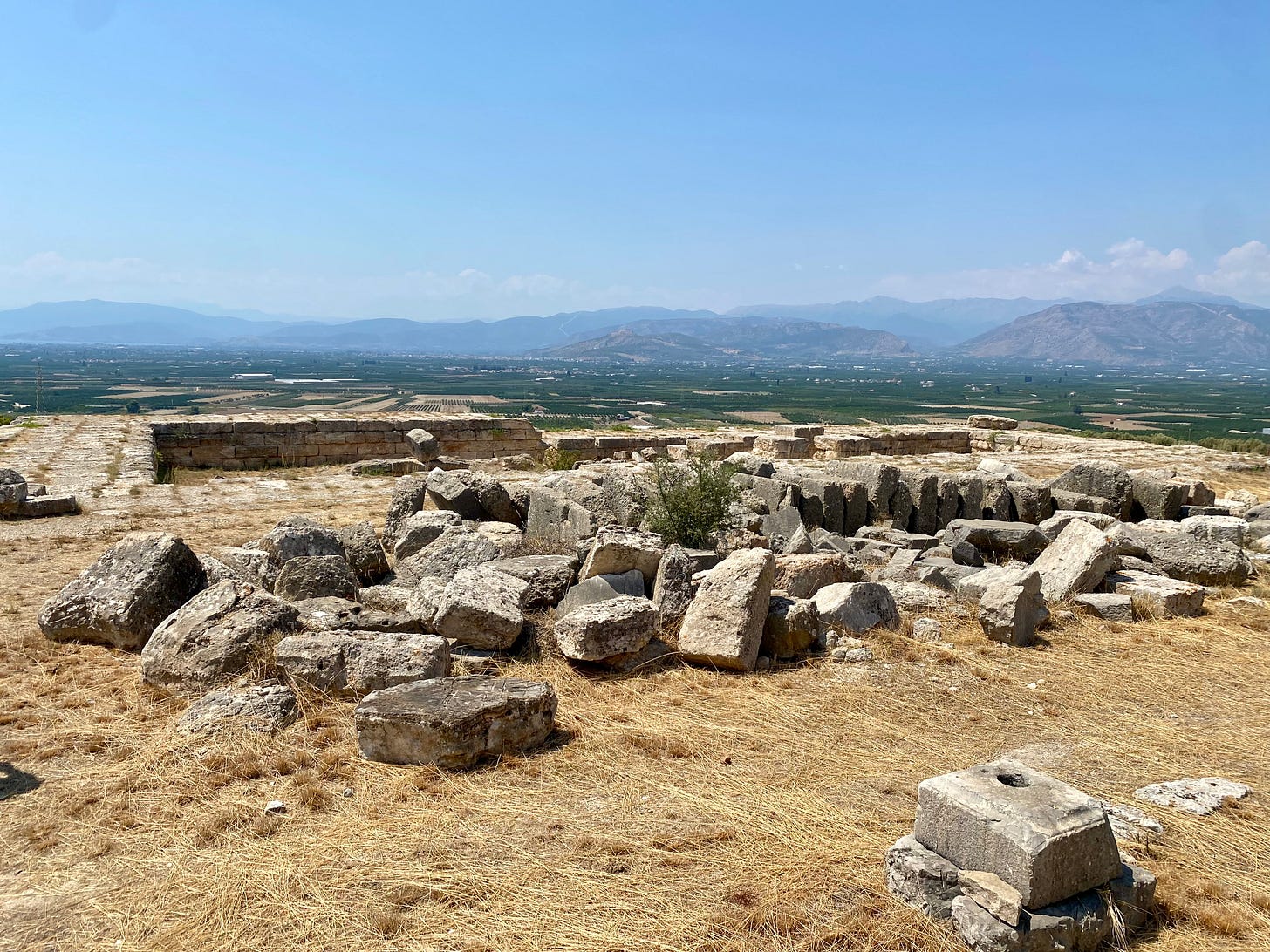
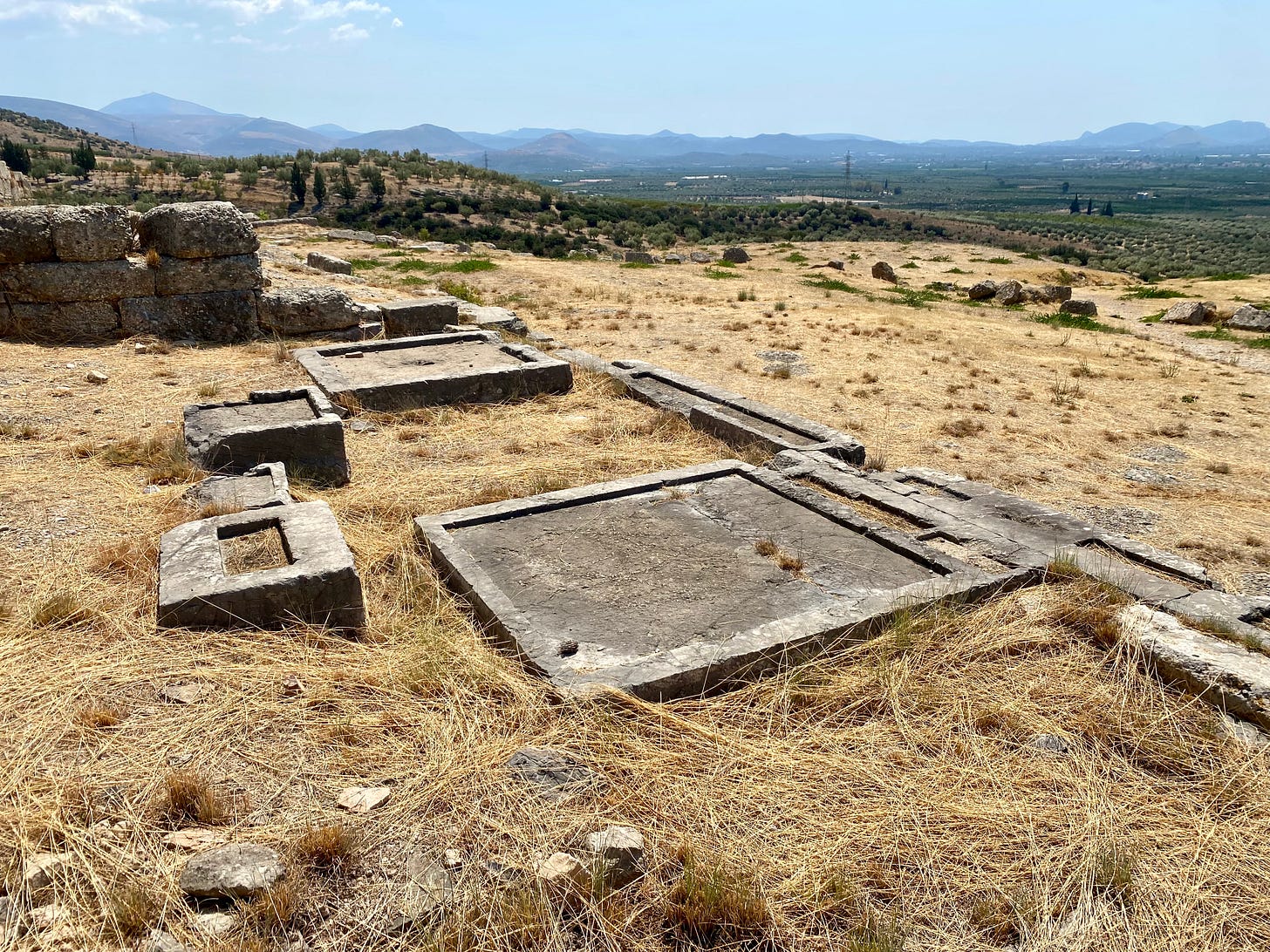
After a great look around the site, we head off to our next stop. Despite the fact that we visited Mycenae in 2019, we are happy to go back for another look.
Next stop: Ancient Mycenae




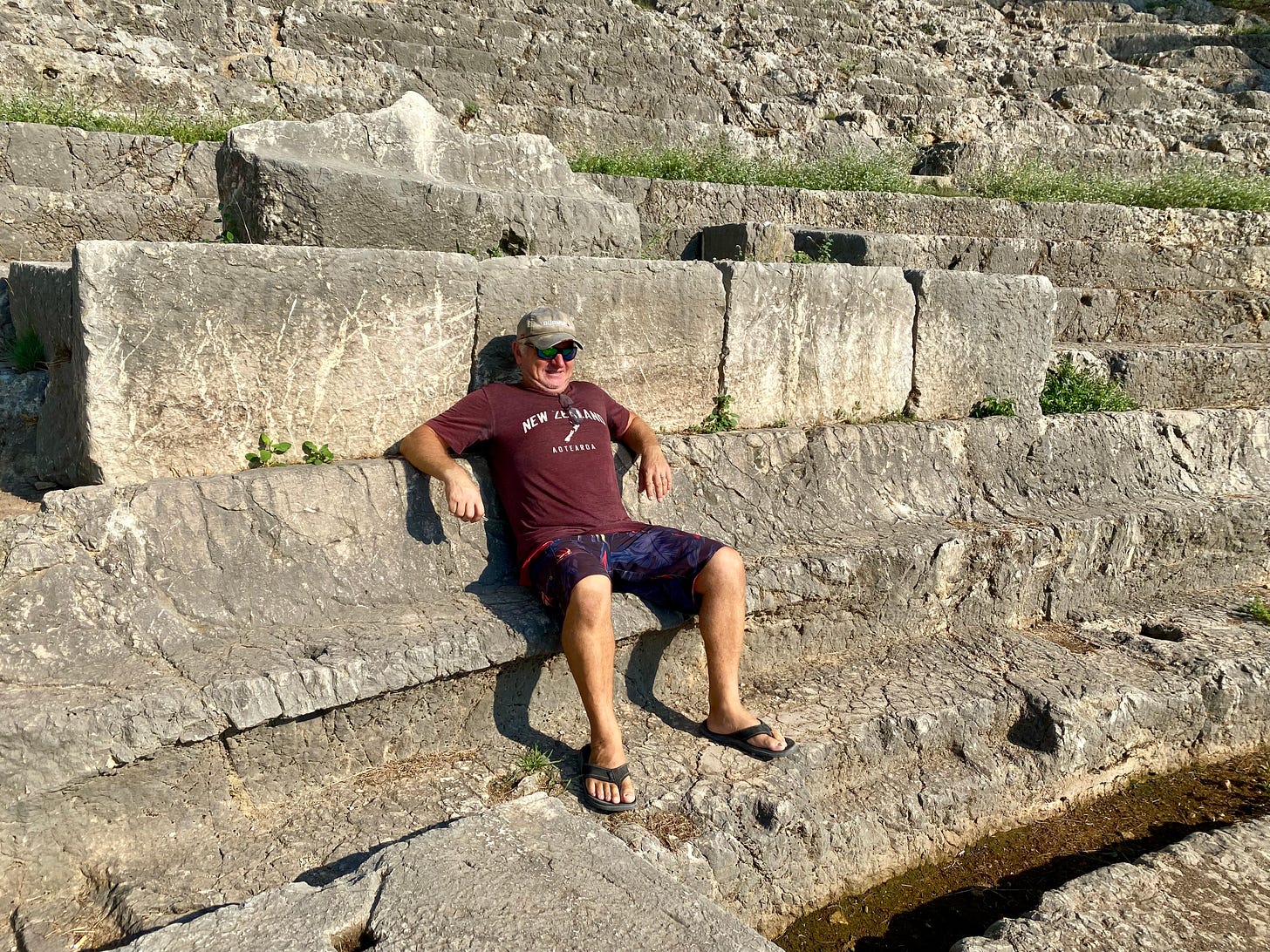


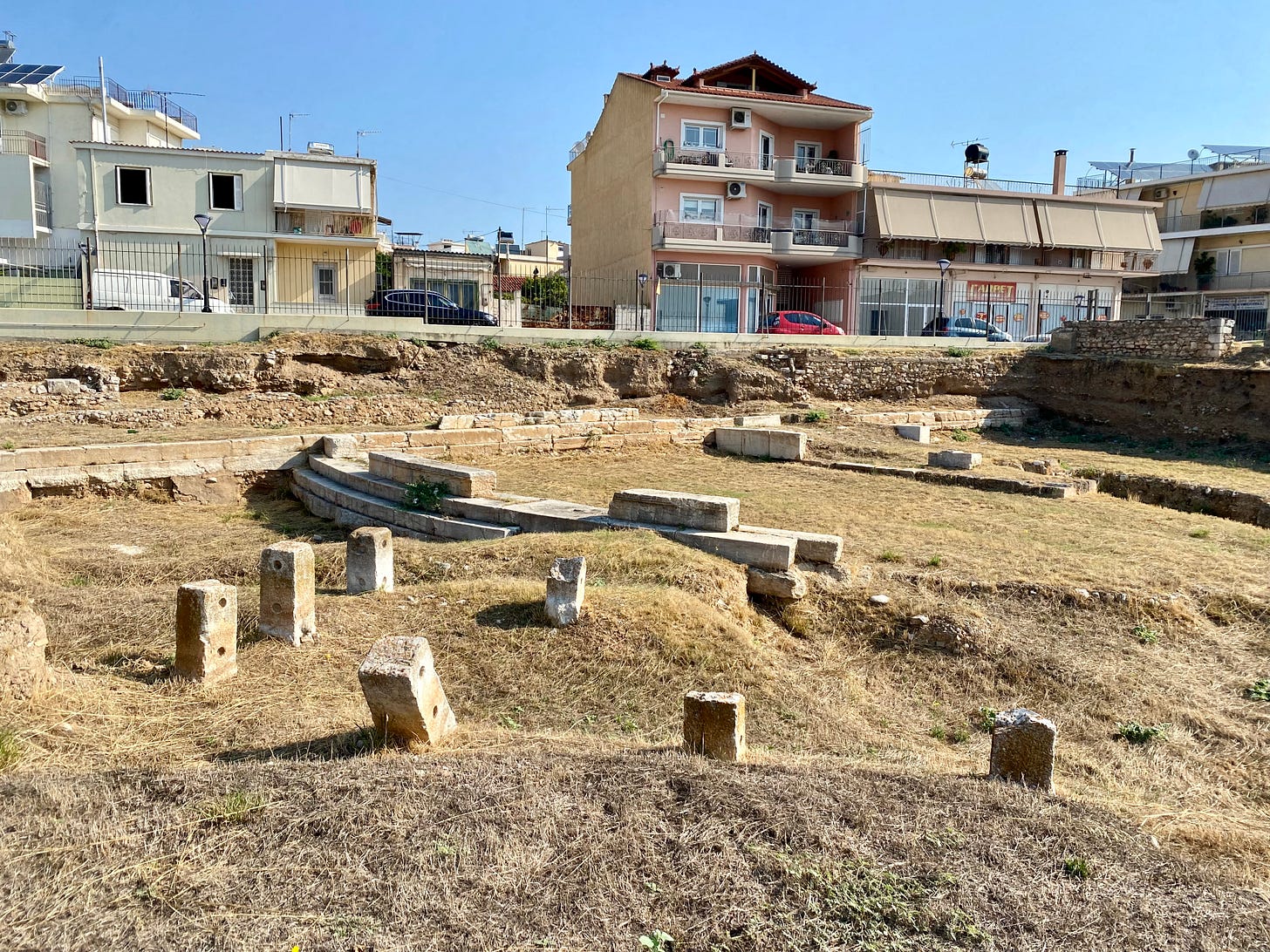
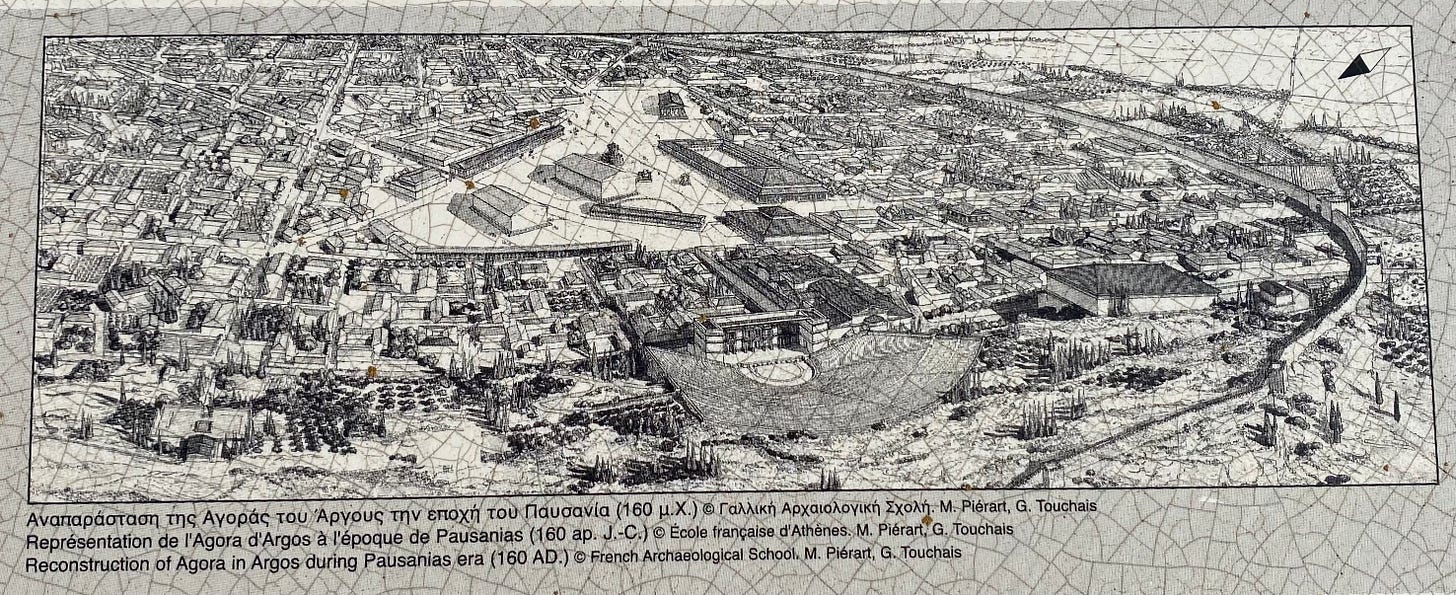

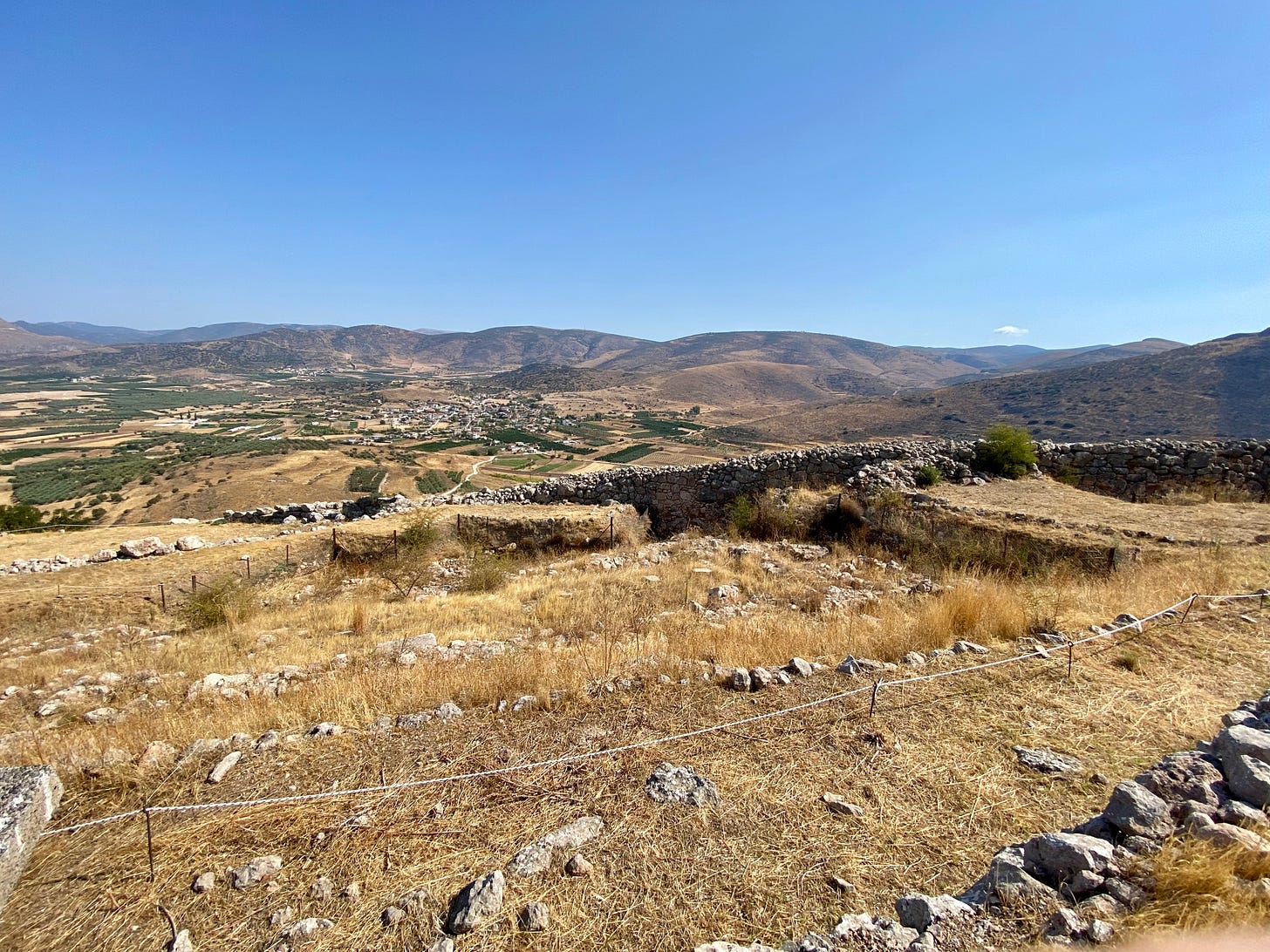
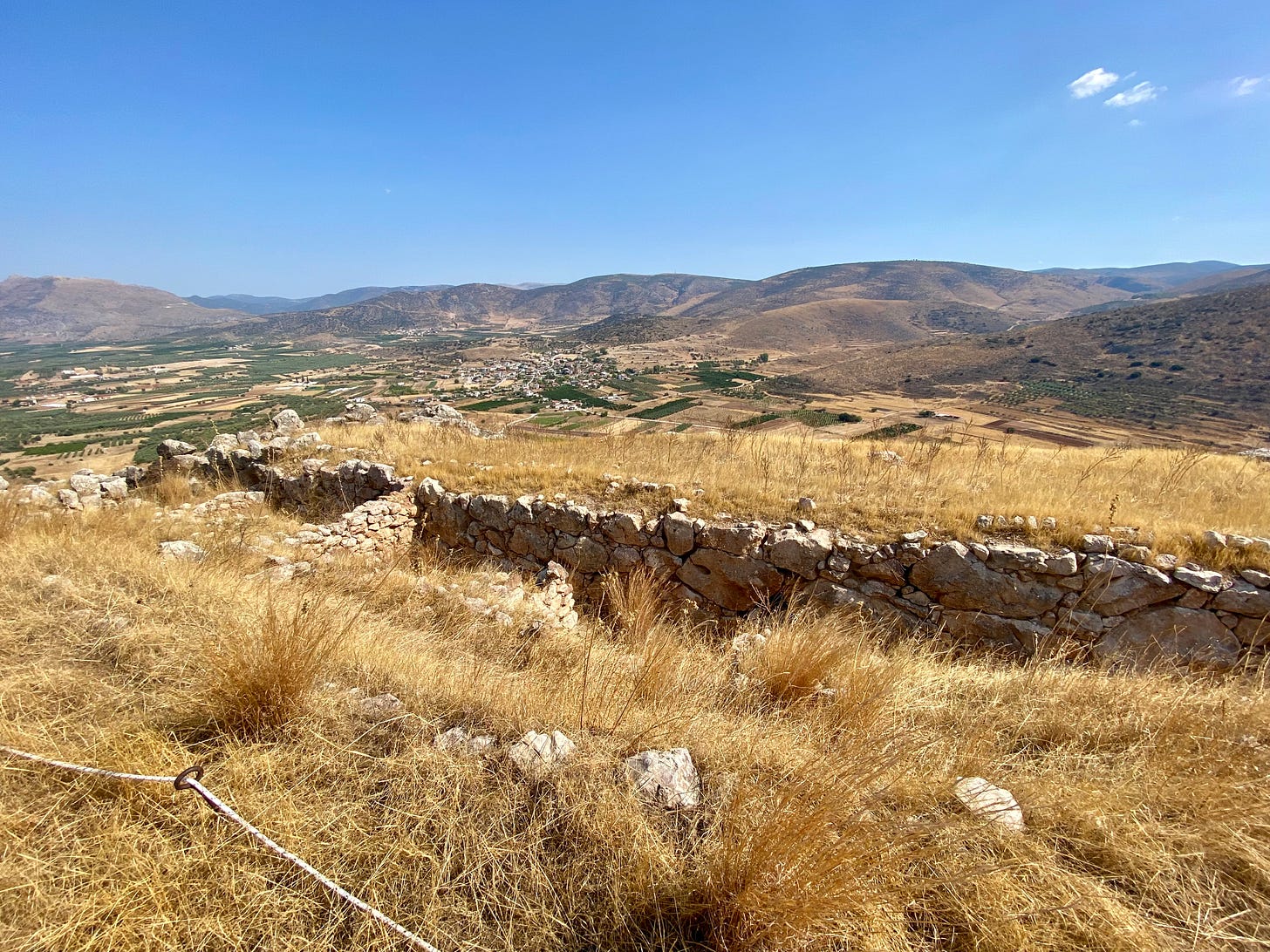
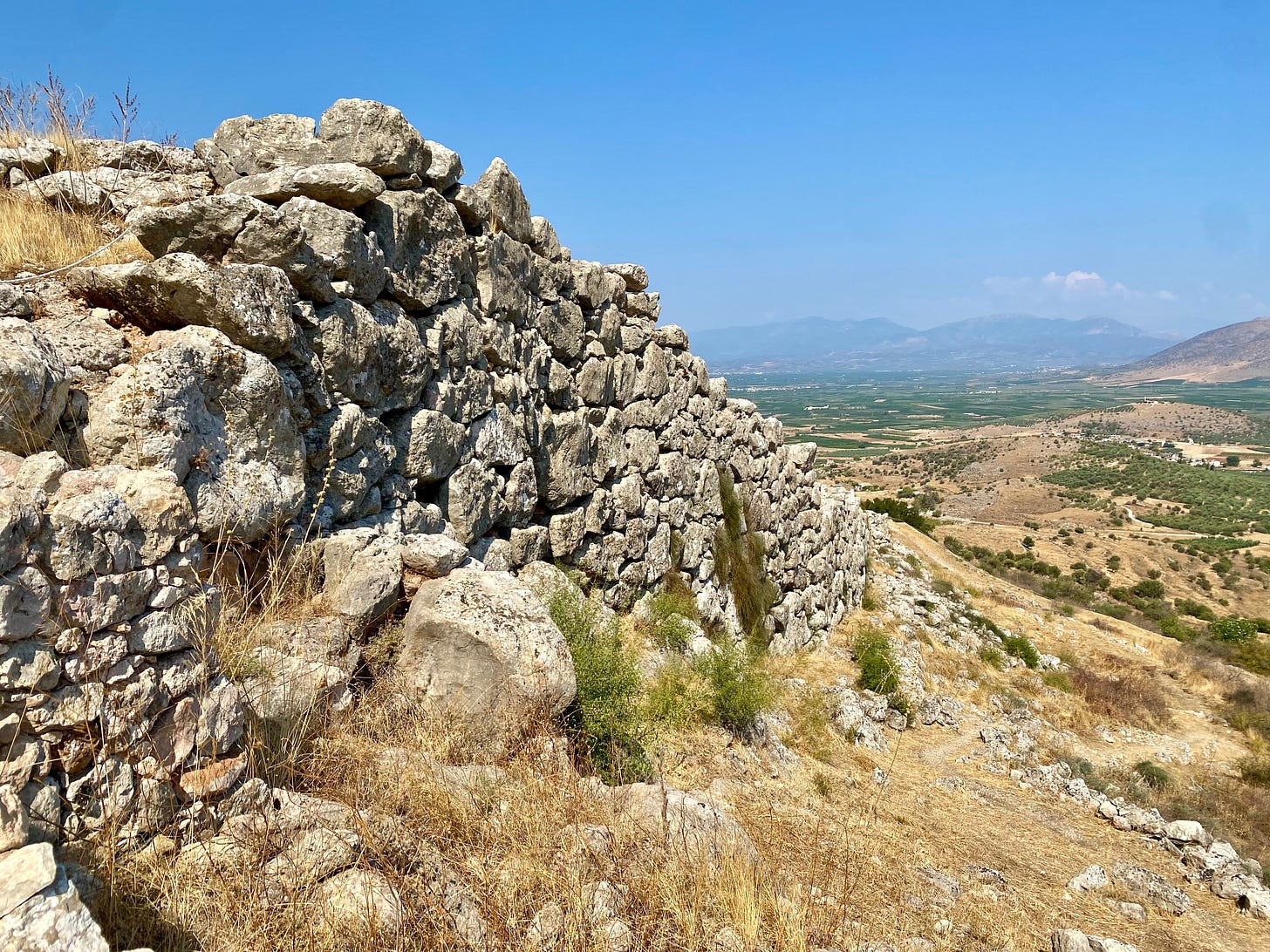

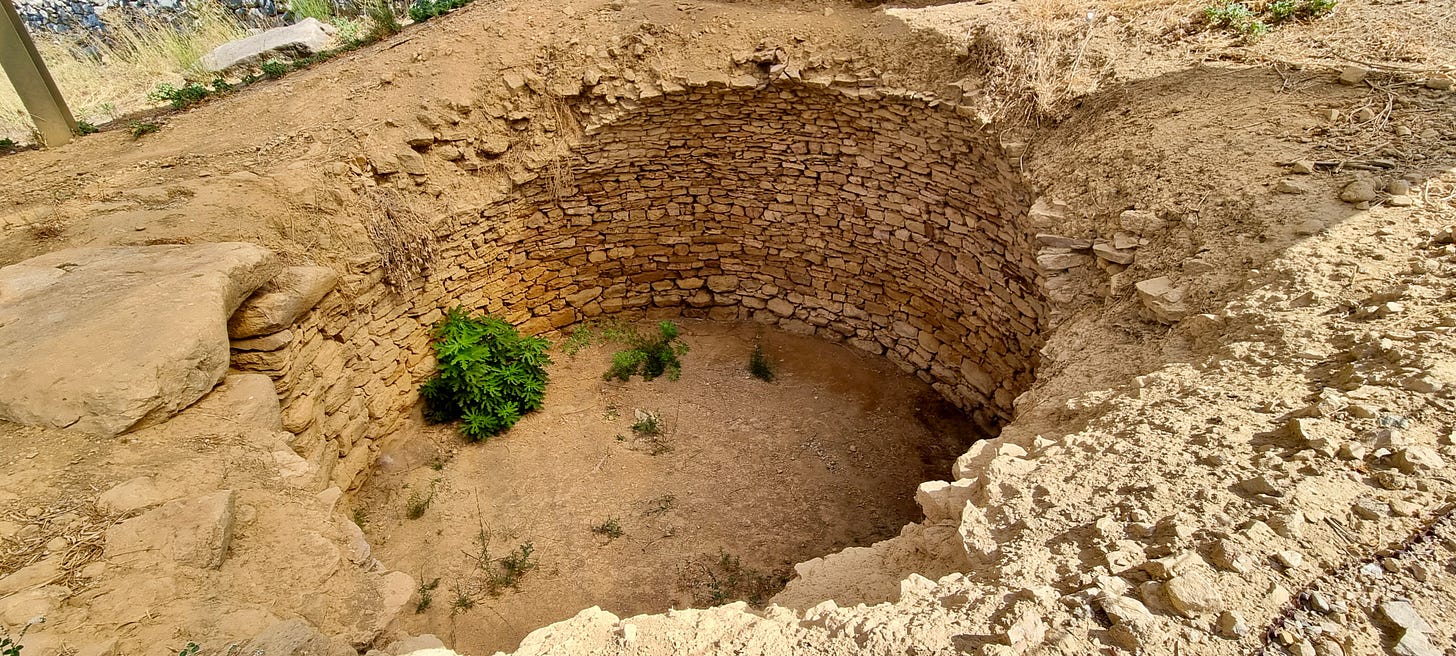

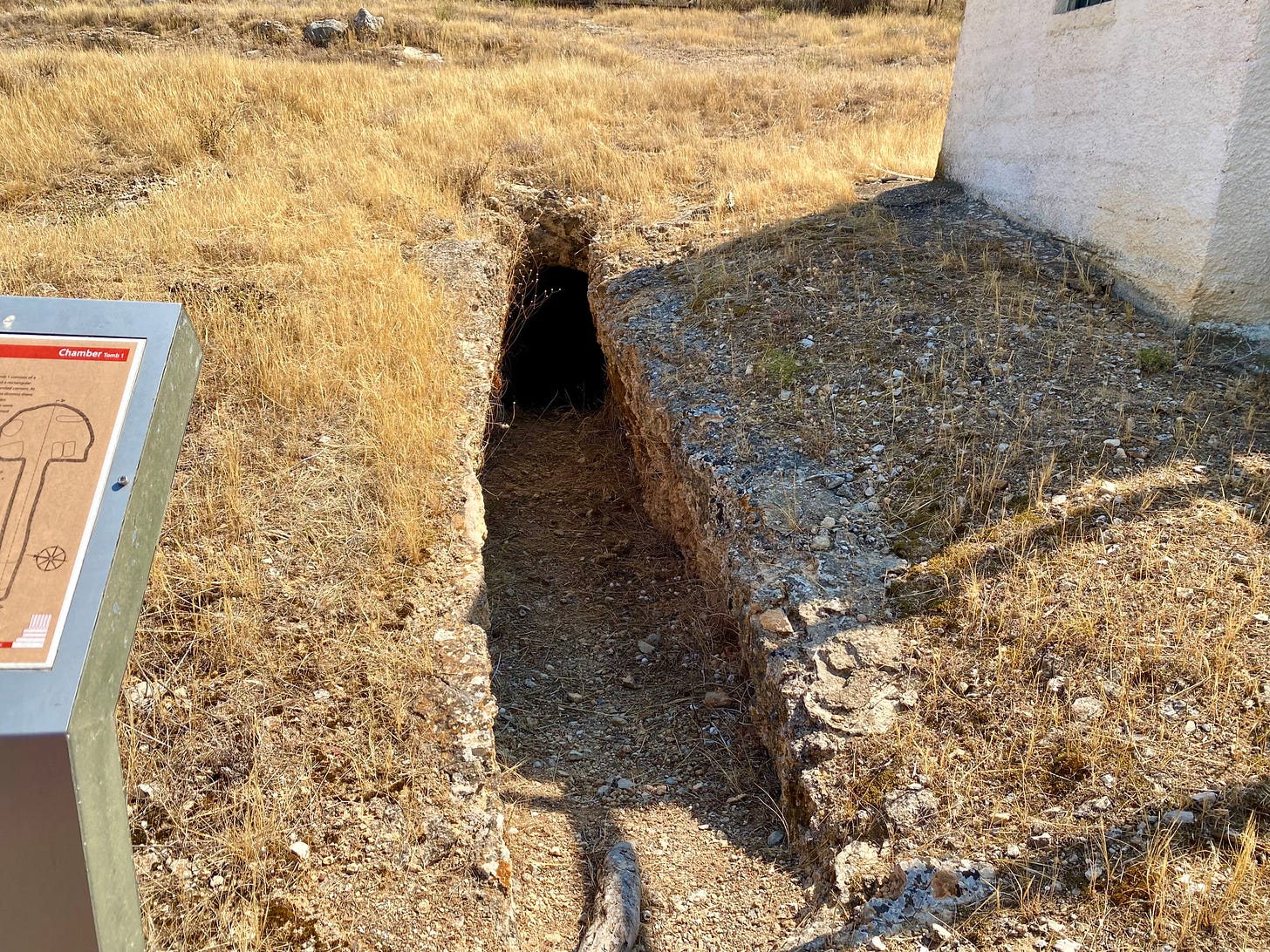



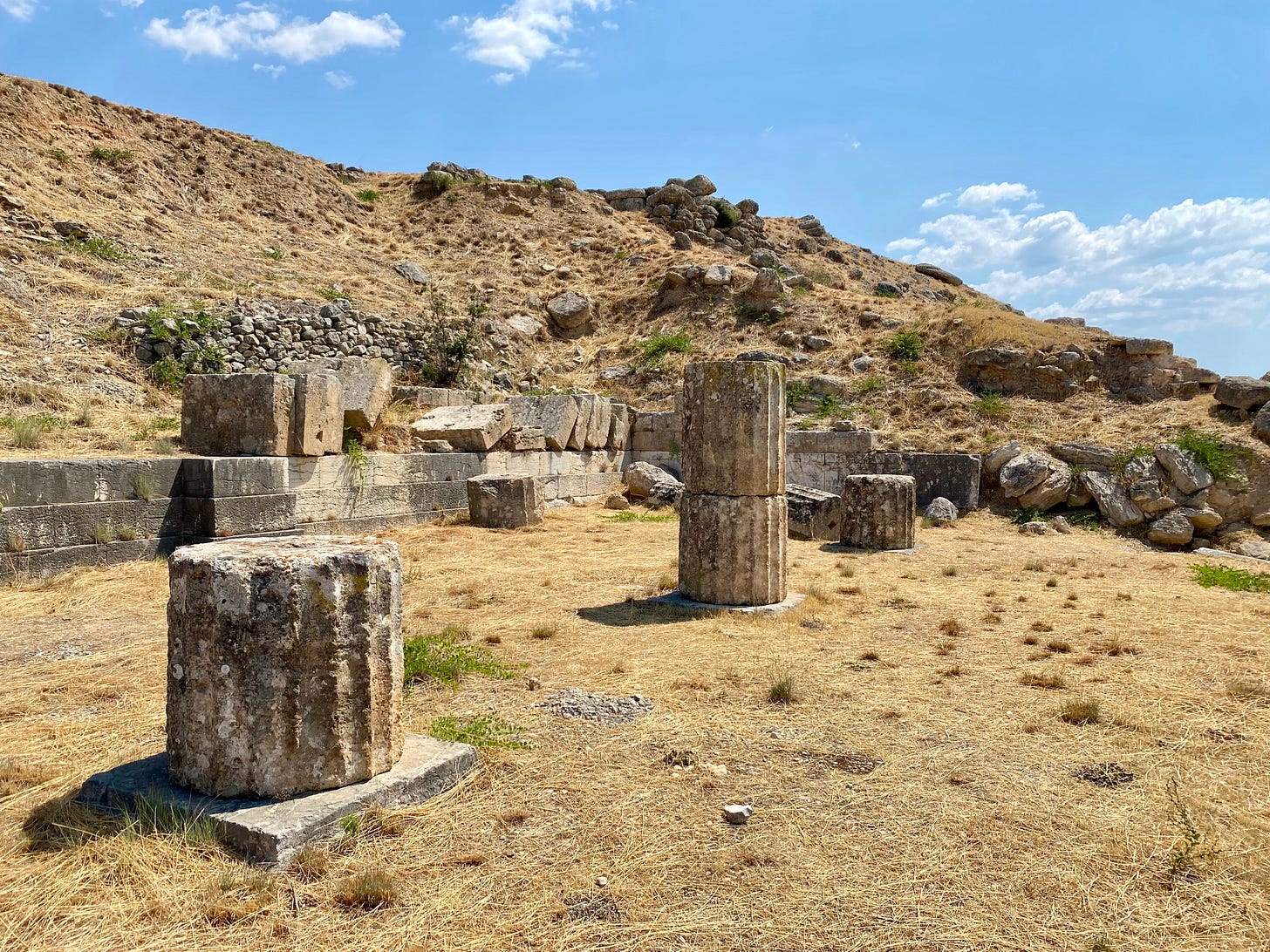
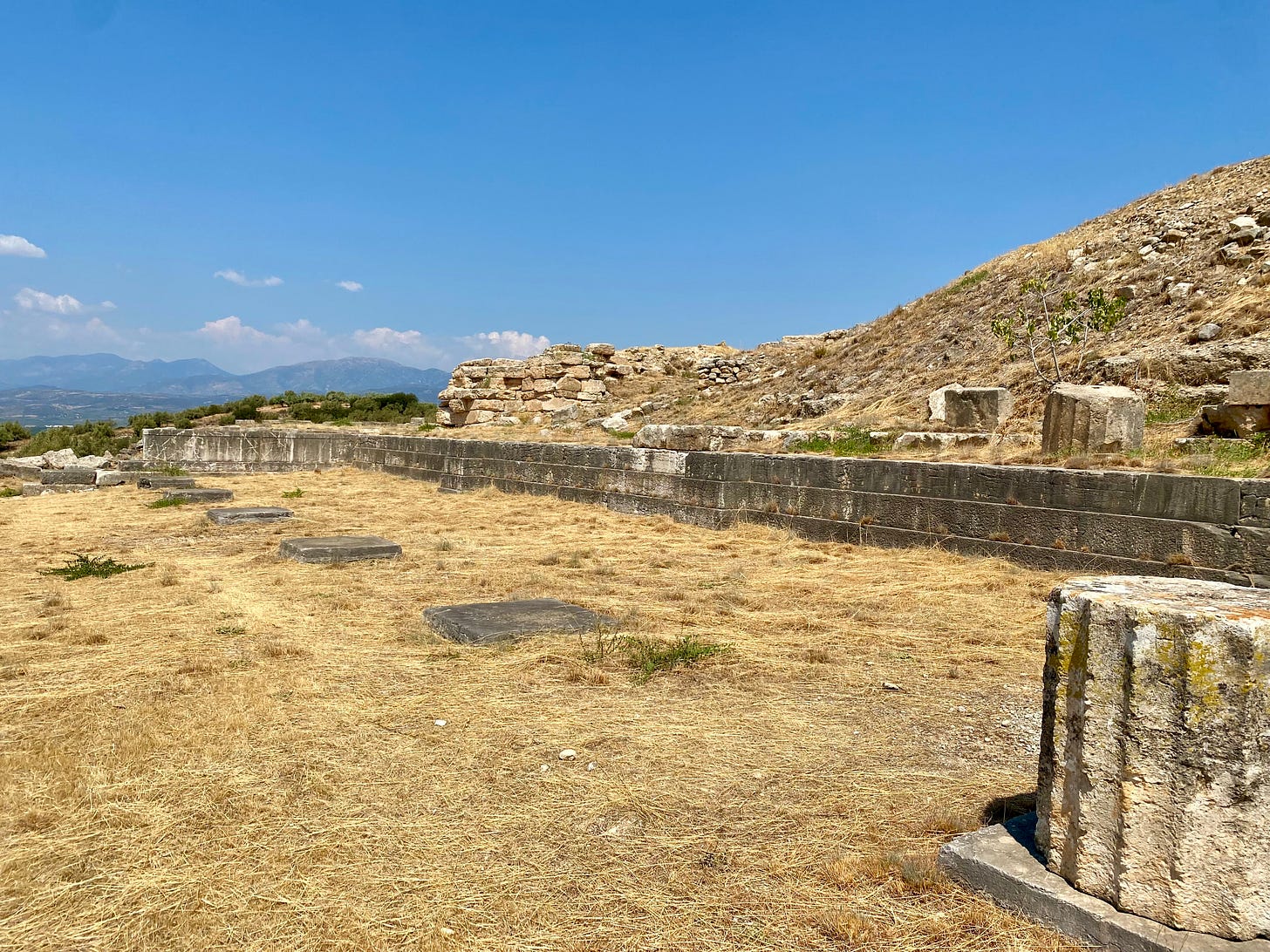

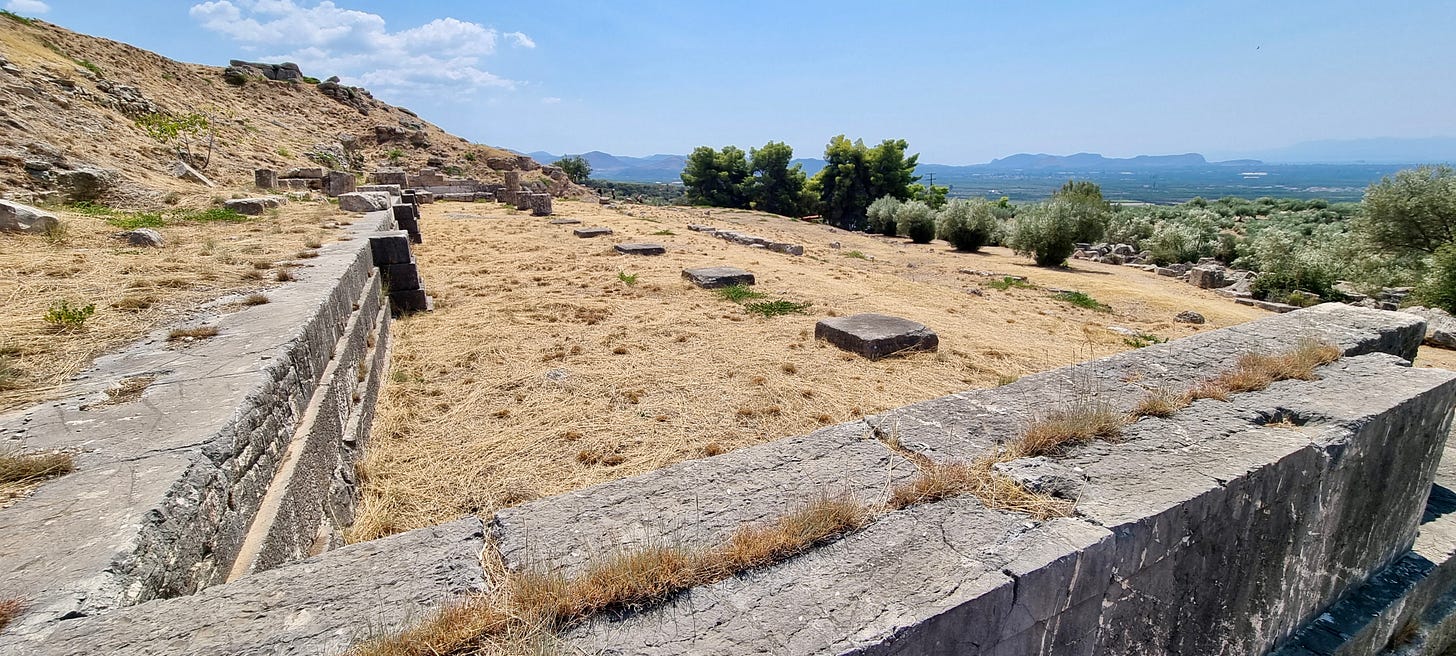
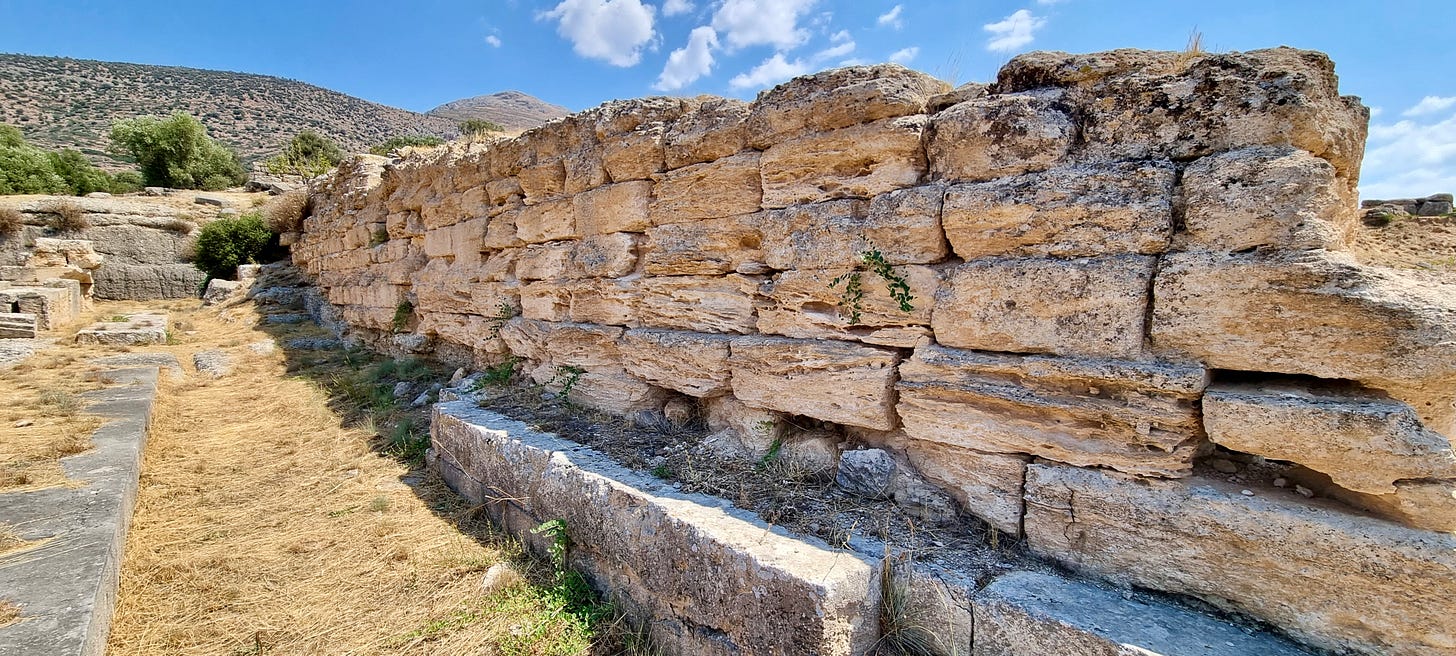



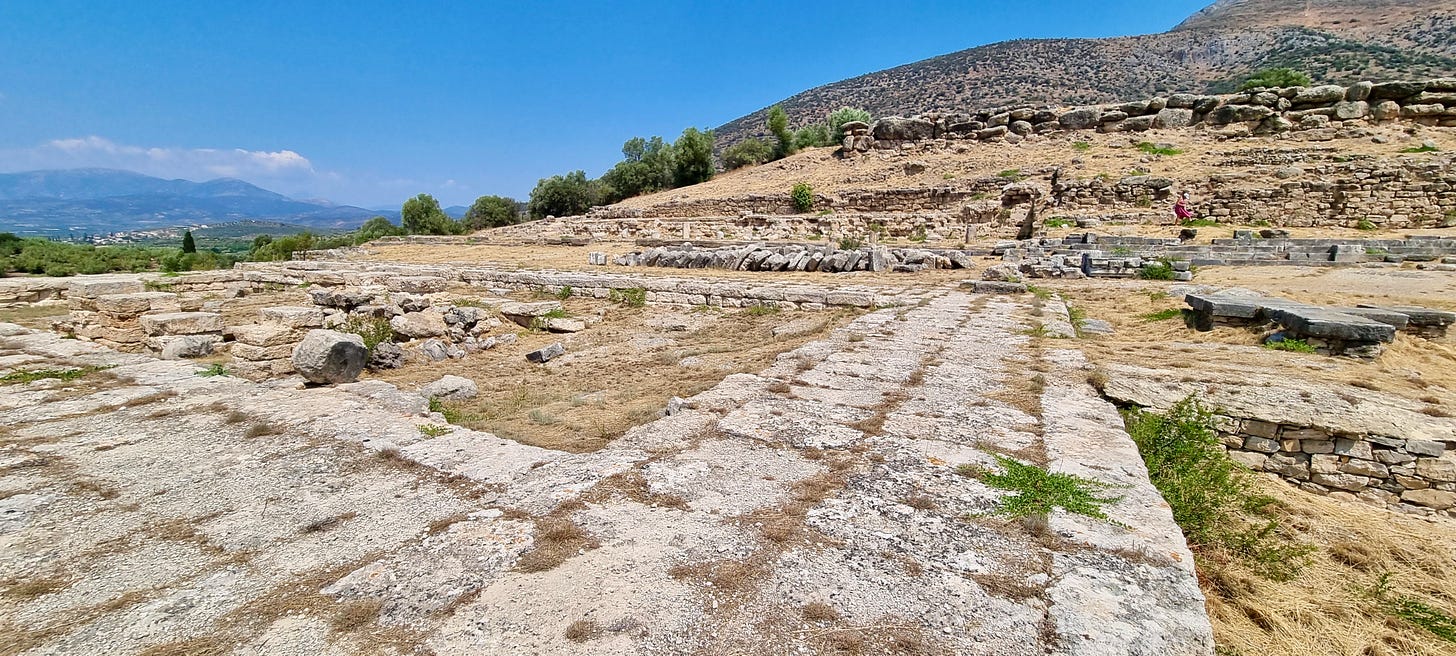
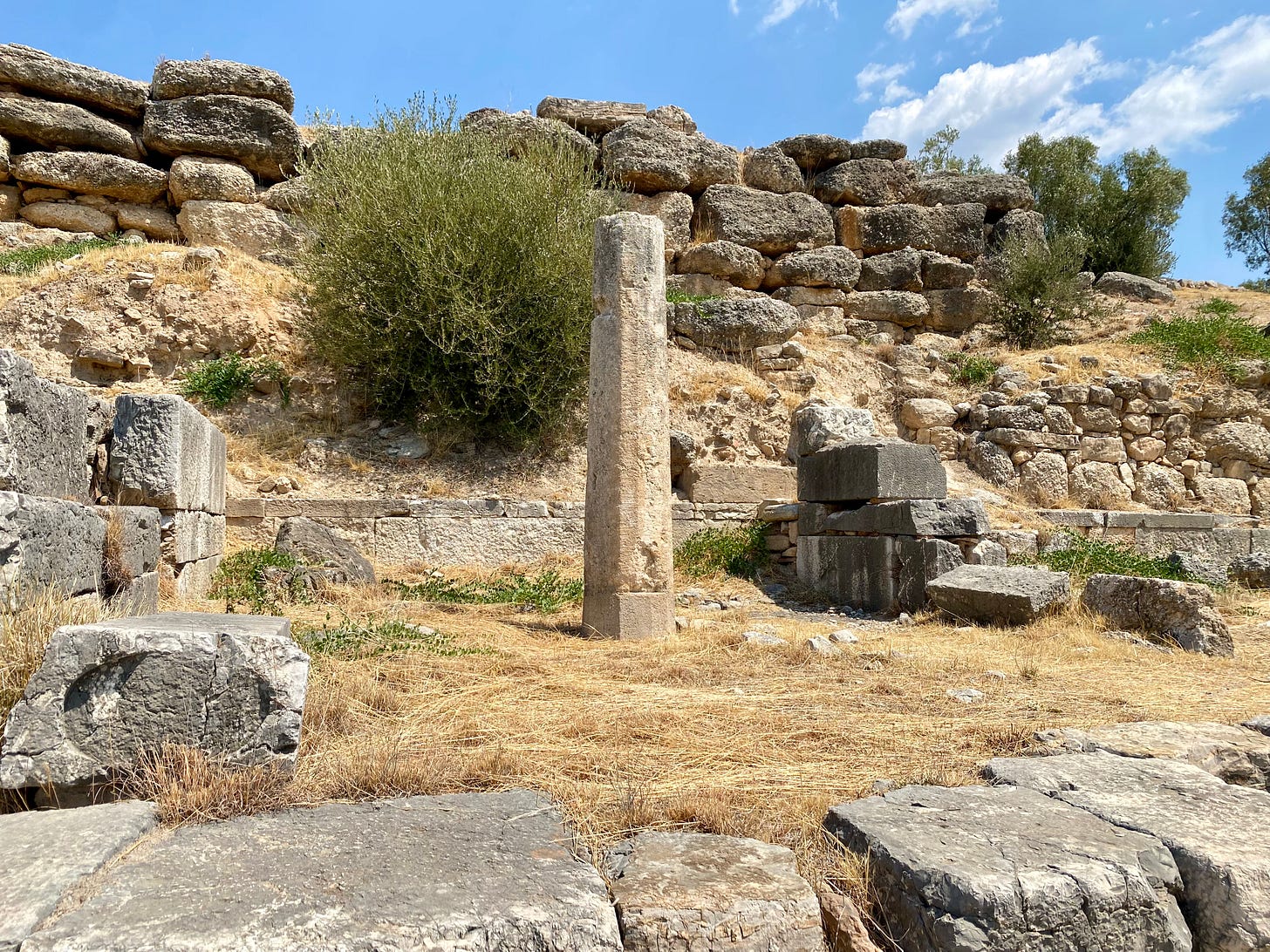


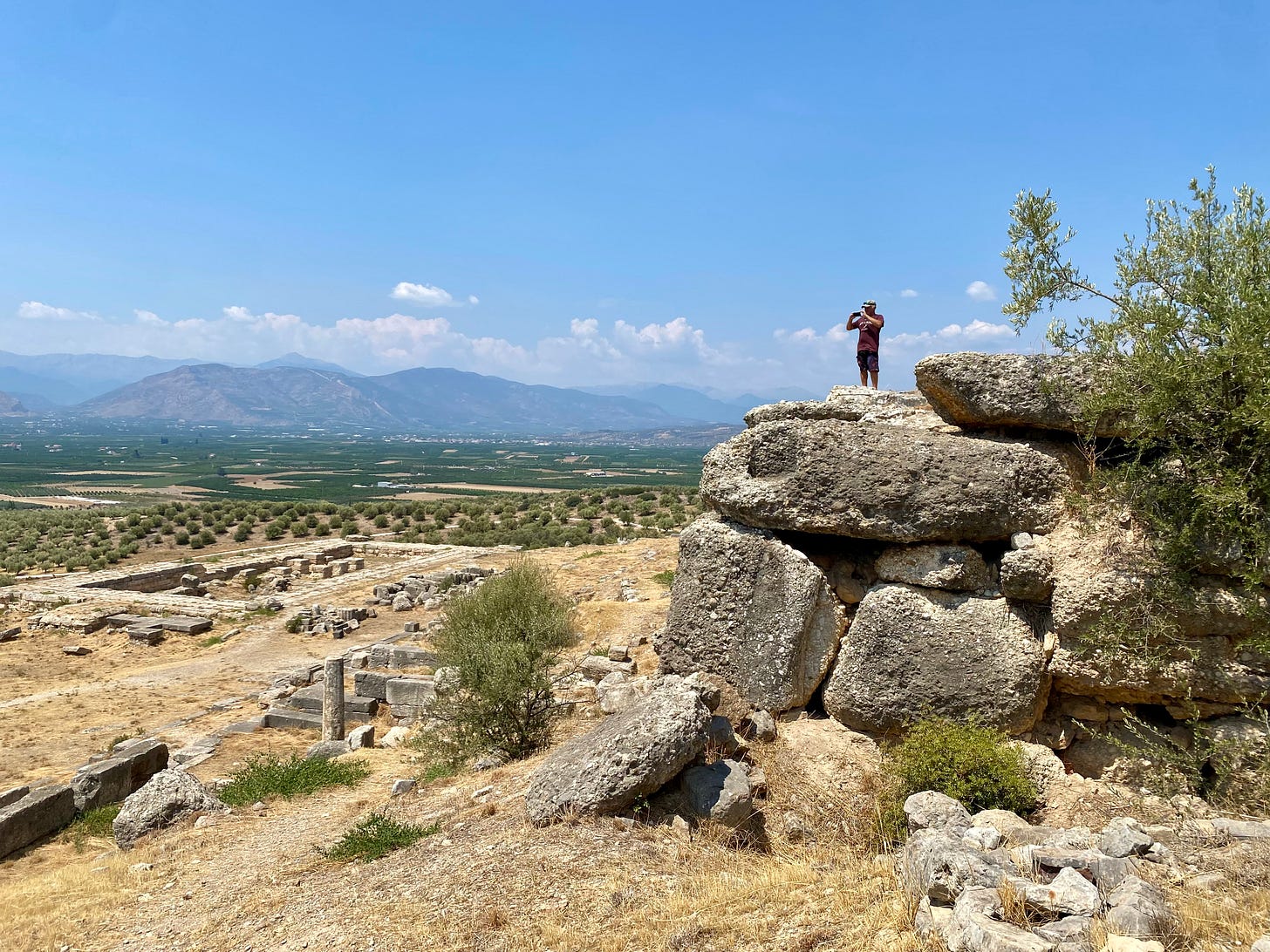
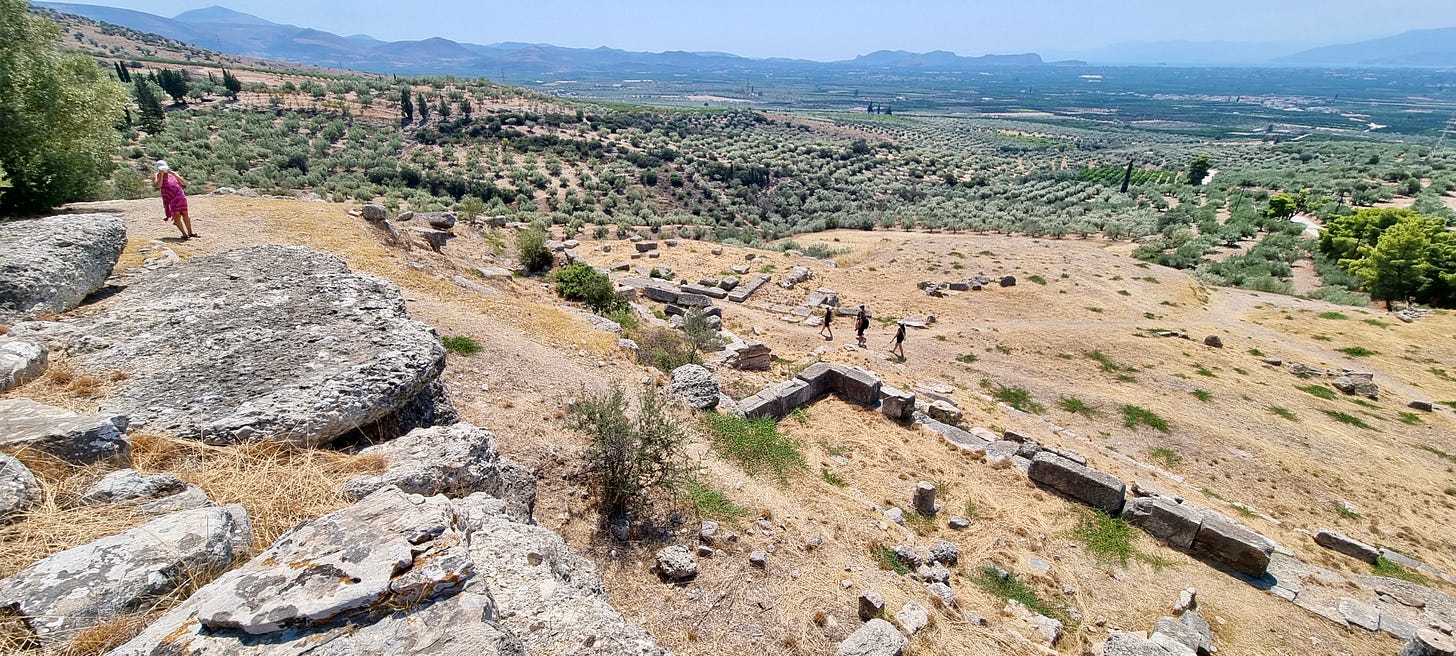
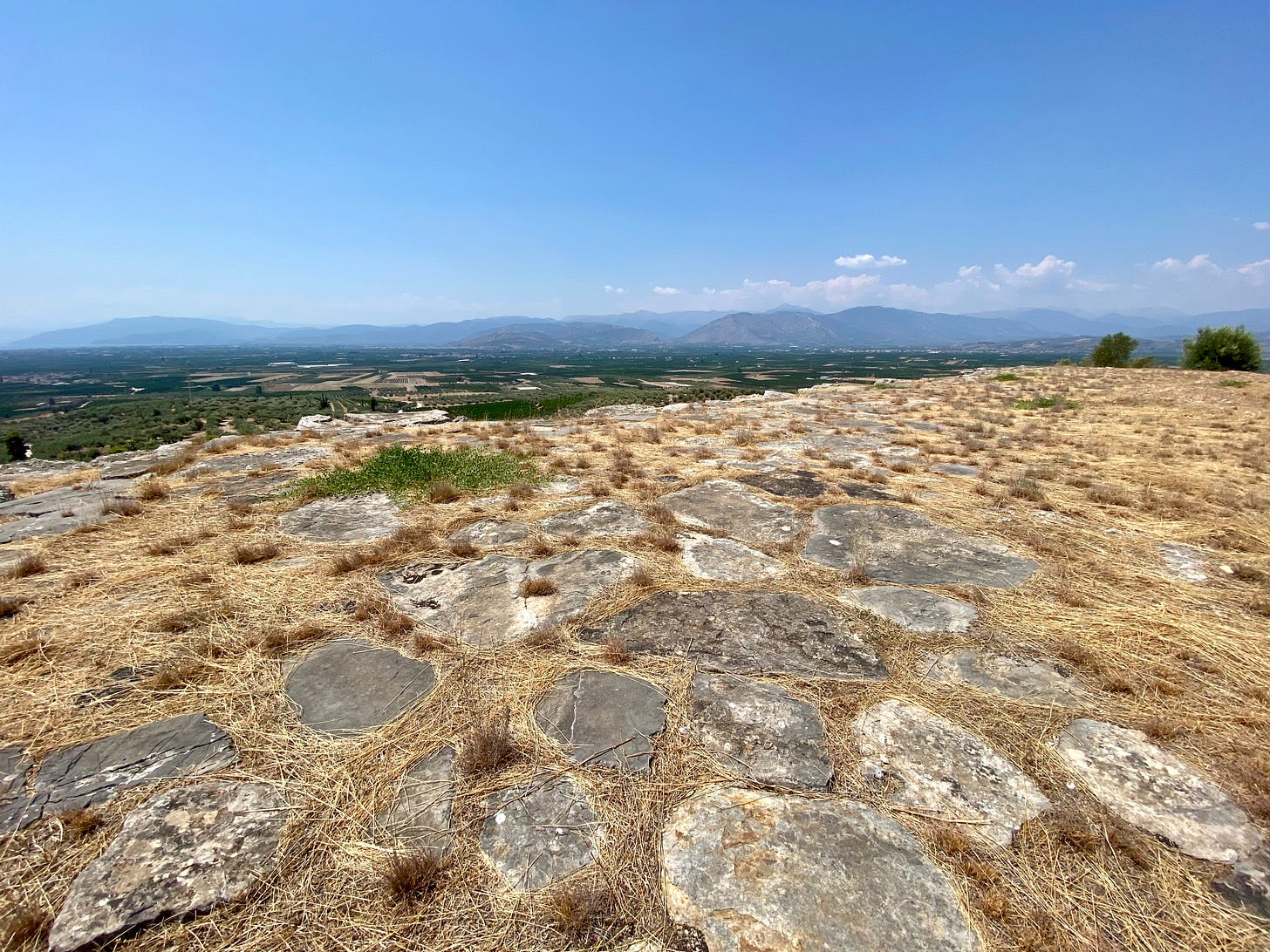
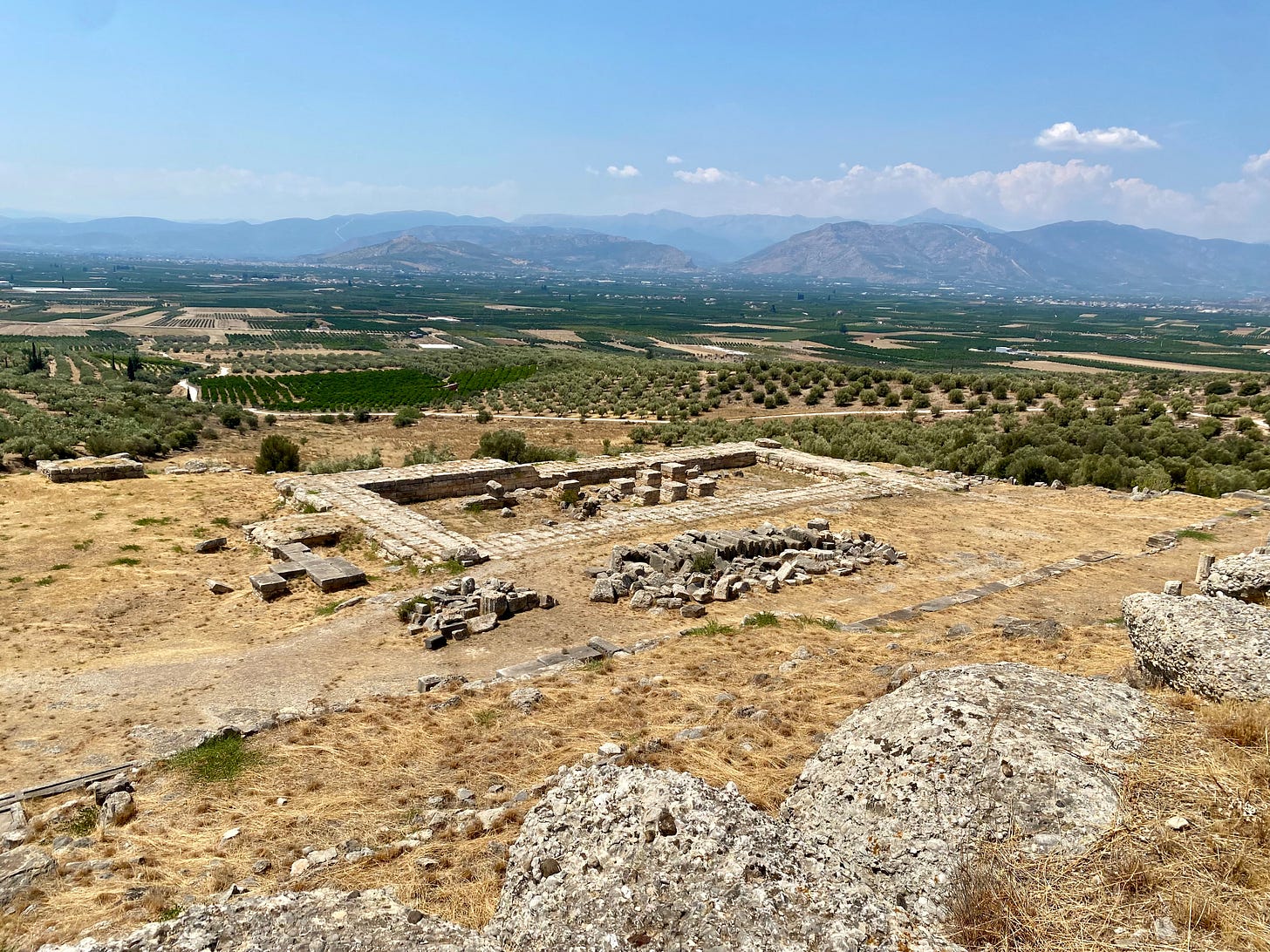




Share this post